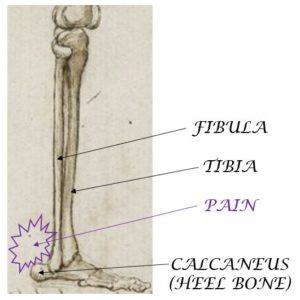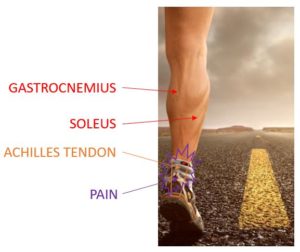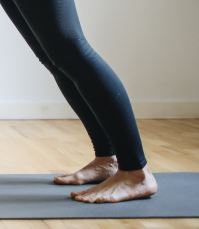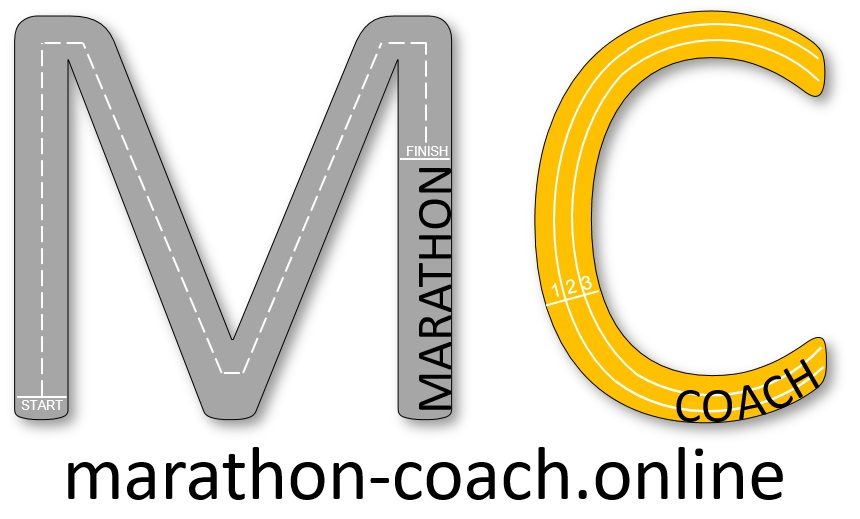Injuries
Runner injuries are always an important point of discussion between athletes. Every athlete will have been through an injury period and it is always a tough mental time. Looking at the statistics, the majority of the injuries are between the knee and the foot. The top five injuries with runners are:
1 – Patellofemoral Pain Syndrome (PFPS) – Runner’s Knee
2 – Achilles Tendon injury
3 – Plantar Fasciitis
4 – Shin splints
5 – IT band
Another common injury is the hamstring injury.
The main causes of injuries are the increase in the training load too quickly and a previous injury. To avoid injuries, ensure you increase the load very progressively and if you get injured, get the physio to improve the situation and work on your rehabilitation up to the end of the treatment.
To lower risks of injuries, apart from the running, you should work on the drills before the speed sessions and add the following sessions: plyometric, hills reps, Strength and Conditioning.
Disclaimer concerning this article: I give general advice based on my knowledge gained during my sport massage therapy course and readings. This article is not replacing the judgement of a doctor or a physiotherapist. Ensure you visit your local doctor or therapist for a detail analysis of your injury.
What to do when you get an injury:
First, the most important is to stop your run / session. Do not run on an injury. Take a taxi, ask a drive back home or walk back. However, do not continue your run.
Secondly, when you are at home, you need to follow the PRICE treatment for the next 48 hours to 72 hours until the inflammation is gone:
– Protect the area.
– Rest: avoid walking too much, do not do any sport. If the pain is very acute, use crutches.
– Ice: This is a bony area, then you should ice only for 5 minutes at a time. Ice three to five times per day. Use a cloth to avoid the ice to be in direct contact with the skin. If you have access to the sea, a cold river, you can use the natural water to cool down your full legs. Using ice cubes in a bathtub is an alternative.
– Compress: If there is inflammation of the knee, compress the area.
– Elevate: Ensure the knee is slightly bent. An advice is to put a cushion under the mattress and not directly under to feet.

Third, get an appointment with your physio. The physio will be able to start the treatment after the inflammation.
Fourth, if the physio cannot fully treat and the injury is very serious you need to go to your doctor or specialist. If the injury is serious, go straight to the doctor or to the emergency room of your local hospital.
Reminder
The physio will be able to improve the injury during your visit, but remember that the main improvements are going to come from you. Ensure you do all the exercises given by the physio.
Do not overdo because it can be counter-productive and bring further inflammation, but ensure you do not wait until next appointment to get the physio to improve the situation.
Achilles Tendon tendinitis / tear:
The Achilles tendon injury is the second most common injury with athletes. The Achilles tendon is the link between your calf and your heel bone. The calf is in fact two different muscles: the soleus is deep between the bones and the gastrocnemius. The main injury is the inflammation of the tendon or tendinitis. A more severe injury will be a tear of the tendon, up to the complete rupture of the tendon. Rarely, we arrive at a rupture of the tendon. It can be common with jumpers, hurdles due to the choc of the movement.
Achilles tendinitis is a common condition that occurs when the large tendon that runs down the back of your lower leg becomes irritated and inflamed. … It connects your calf muscles to your heel bone and is used when you walk, run, climb stairs, jump, and stand on your tip toes
With the help of Leonardo Da Vinci drawings let’s see the bones and muscles involved:


What is happening exactly: The Achilles tendons are used in each stride during the walk, run, jumps or climbing. They are even used when we are standing. It is common that the tendon gets irritated or inflamed. It is then an Achilles tendon injury for the athlete.
symptoms and cause:
The Achilles tendon is getting painful after a run or sport activities. Generally, the pain appears after the run, when the tendon is getting colder. The pain is at the back of the leg, between the calf and the heel. The pain, tenderness or stiffness is more important in the morning, and improve with light activity .
If a strong noise happened in the tendon, during an impact, it is important to see a doctor or even to go to the emergency room of your local hospital. You may have a rupture of the tendon .
Achilles tendinitis are caused by repetitive or intense strain on the Achilles tendon. This tendon is used in each stride. The structure of the Achilles tendon weakens with age, which can make it more susceptible to injury. It is important to manage them especially if you participate in sport only on weekends. It is important to increase the intensity or the mileage of your training progressivelly to allow the body to get stronger .
Diagnosis:
The pain is localized between the calf and the heel. The pain is more important when the tendon is cold. Just by squeezing, the tendon with the finger will give a good feedback on the injury.
Squeezing the calf should move the foot. To diagnose a rupture, the therapist will squeeze the calf and will not see any motion in the foot. At this point, the injury will need to be treated immediately with a chirurgical operation.
If the inflammation is important, you can even see a difference in the tendon size (right ankle/tendon completelly inflammed):

The doctor may ask to get a Magnetic resonance imaging (MRI) in order to see better the damages on the tendon.
Treatment:
First, reduce the inflammation using ice three to five times per day. After 48 to 72 hours, the inflammation should reduce.
A good way to reduce the pain is to insert a heel sole in your shoes. This extra layer will reduce the extension of the tendon itself during the strides. It will help to reduce the inflammation.
It is at this point that the physio will be able to start the treatment of the Achilles tendon injury in a very specific way.
The first treatment will be on the tendon directly with cross fiber deep massage. It will not be a very pleasant massage with some pain. The use of needles may help to accelerate the healing.
The therapist should then work on both the calves and the quads. Both may be tight, and have scare tissues to improve. A tight or shorter calf will mainly be the cause of the Achilles tendon to be put in tension.
The therapist can apply kinesiology tape on the back of the leg to support the tendon. The tape is applied from the heel bone, along the tendon itself and be extended to the top of the calf.
When going back home, the therapist will give you exercises and then ensure you spend time improving the situation by doing the exercises as specified. The use of ice after the exercises may avoid further inflammation.
The main stretch should concentrate on the calves. With the foot on the floor, put your hands on the wall and bend forward to stretch the calf and the Achilles tendon. You should feel the back of the legs stretching.

Then and use a roller on your calves and quadriceps to improve the muscle suppleness.
Eccentric / Stanish Protocol:
For the Achilles tendinitis, the best exercise is the Stanish protocol. It is an eccentric training of the tendon and the muscles. This protocol from the 80’s looked at the rehabilitation of the tendons by using an eccentric calf muscle movement with increase load.
Ensure you use this protocol without pain on the tendon and if the next day, the pain increase, then reduce the load.
Other therapies may involve using shock waves, injections of corticosteroid directly in the tendon or a surgical treatment.
To lower the risk of the Achilles inflammation or rupture to happen, work on your strength and add the following to your training:
– 10 to 15 minutes of drills before each speed training session
– One session of plyometric per week
– hills repetitions (at the end of your easy days, 5 to 10 hills repetitions)
– Strength and conditioning (2 sessions per week)
– Increase the training volume gradually, especially for master athletes
– Choose your shoes carefully
